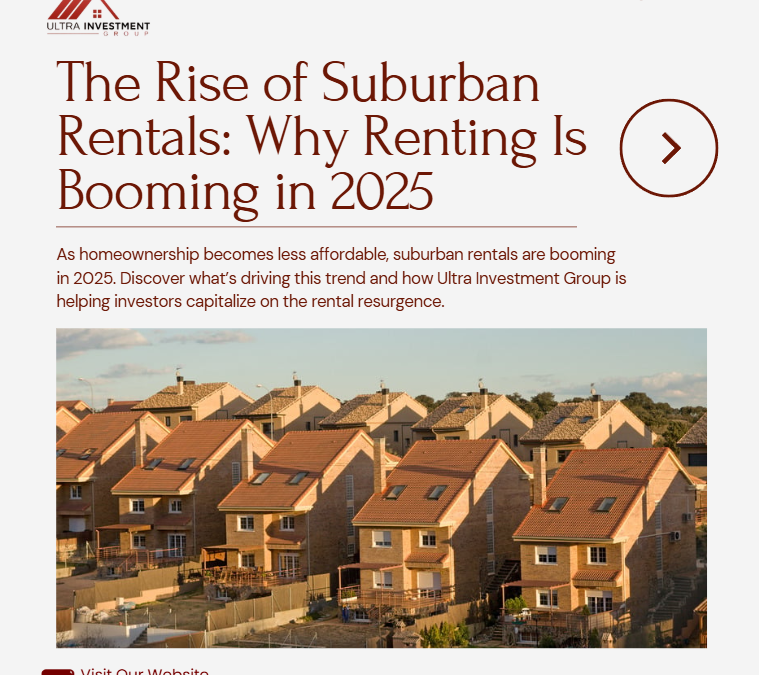Real estate investors in 2025 are facing a critical question: should you flip homes for quick profits, or rent them out for long-term cash flow? This blog breaks down the pros, cons, and key market factors so you can choose the strategy that fits your financial goals.
🔍 What’s the Difference Between Flipping and Renting?
Before we dive into comparisons, let’s define the two:
- House Flipping: Buying a property at a low price, improving it quickly, and reselling it for a profit.
- Rental Investing: Buying a property to lease out to tenants, generating steady monthly income and long-term appreciation.
Both strategies can be profitable—but they suit very different investor profiles.
📊 Market Snapshot: 2025 Trends to Know
✅ High Demand, Low Inventory: Inventory remains tight in many urban and suburban areas, which benefits flippers in hot markets.
✅ Rising Interest Rates: Mortgage rates have slightly increased since 2024, making buy-and-hold strategies more appealing due to inflation hedging.
✅ Rental Rates Are Climbing: In cities like Austin, Tampa, and Charlotte, rental demand is at an all-time high, driving up passive income opportunities.
🛠️ The Case for Flipping in 2025
✅ Pros
- Faster Returns: Profits can come in weeks or months—not years.
- Less Management: No tenants, no long-term commitments.
- Market Agility: Take advantage of short-term price jumps or renovations.
❌ Cons
- High Risk, High Reward: Market dips or renovation delays can eat your profits.
- Tax Implications: Flipping is considered active income and taxed accordingly.
- Upfront Capital: Renovations, holding costs, and buying in cash (if you want better deals) require significant funding.
🏠 The Case for Renting in 2025
✅ Pros
- Consistent Cash Flow: Monthly rent payments provide reliable income.
- Tax Advantages: Depreciation and mortgage interest deductions help offset income.
- Appreciation Over Time: Property value grows as the market improves.
- Builds Long-Term Wealth: Great for retirement and passive income portfolios.
❌ Cons
- Tenant Troubles: Late payments, damage, or vacancies can hurt your ROI.
- Management Burden: Unless you hire a property manager, you’re on call 24/7.
- Slower ROI: It could take years to recoup your initial investment.
💡 Which Is Better for You in 2025?
| Criteria | Best Strategy |
| Need quick cash | Flipping |
| Looking for long-term wealth | Renting |
| Hands-off investment | Renting (with manager) |
| Experienced in renovations | Flipping |
| Want tax benefits | Renting |
| Risk-averse | Renting |
🔑 Pro Tips for Success in 2025
- Use AI Tools for Market Analysis: Apps like DealMachine, PropStream, and even ChatGPT can help evaluate flips or rental opportunities.
- Look into Build-to-Rent (BTR): This hybrid model combines long-term holds with new construction—especially popular in Sun Belt states.
- Always Run the Numbers: Use the 70% rule for flips and the 1% rule for rentals to stay profitable.
- Explore DSCR Loans: Debt-Service Coverage Ratio loans are tailored for rental investors based on property cash flow.
🚀 Final Thoughts: Which Strategy Wins in 2025?
There’s no universal winner—it depends on your goals, risk tolerance, and timeline.
- Flip if you want fast profits and are skilled at renovations or market timing.
- Rent if you’re focused on wealth-building, passive income, and long-term financial freedom.
👉 Pro Tip: Many seasoned investors start by flipping to build capital, then transition to rentals for stability and growth.
✨ Bonus: Want Help Choosing the Right Strategy?
Download our free Real Estate Strategy Worksheet to compare options side-by-side based on your budget, time, and goals.















